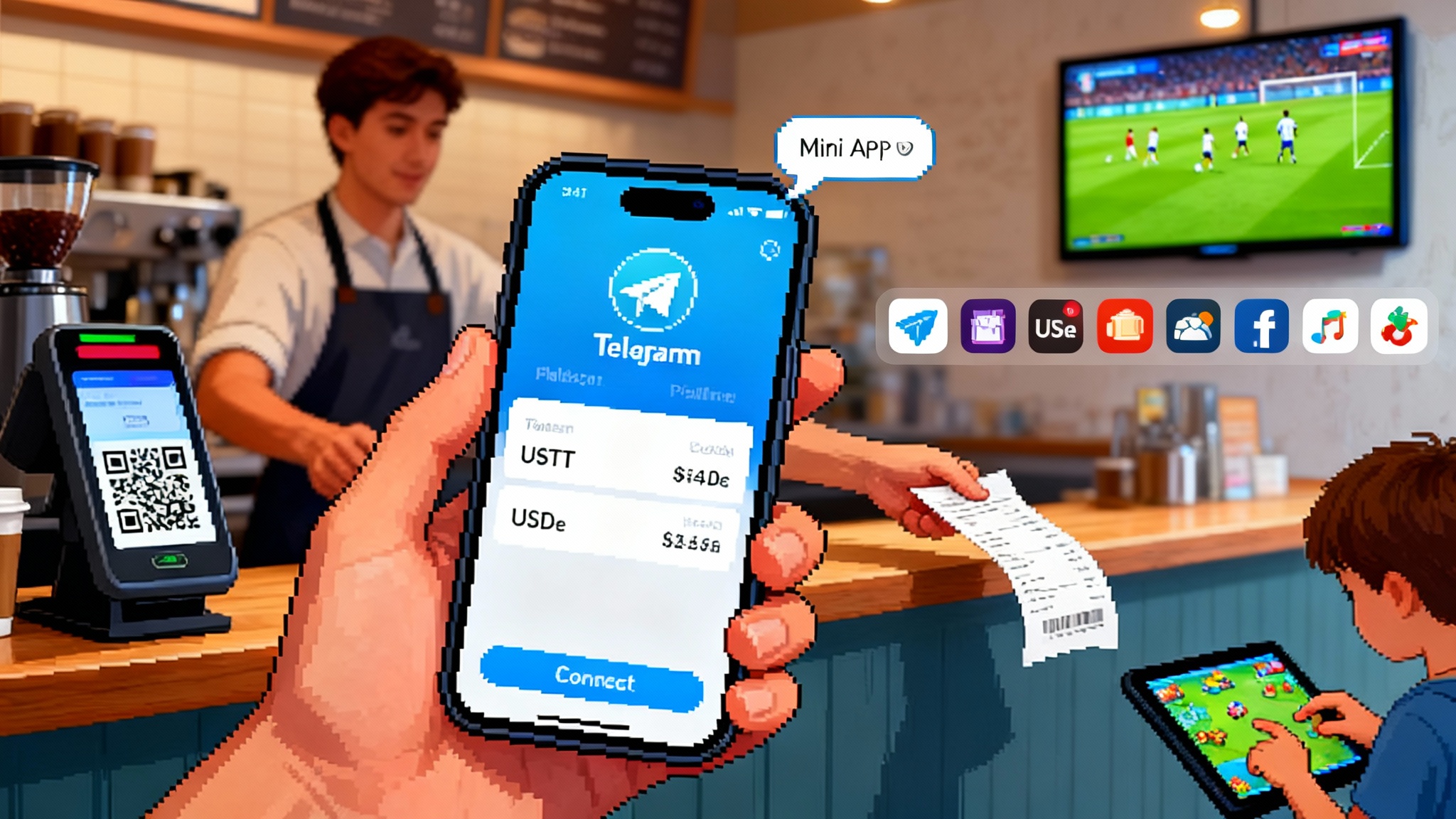GENIUS Act Goes Live: The Real Stablecoin Race to 2026
With the U.S. Treasury comment window closing on November 4, 2025 and final rules expected in 2026, banks, crypto issuers, and retailers are preparing to launch compliant dollars on public layer-twos. Here is who ships first and what it changes.

The switch flips today
At 11:59 p.m. on November 4, 2025, the U.S. Treasury closes the public comment window on its advance notice to implement the new federal stablecoin law. That deadline sounds procedural, but it starts the real countdown to a 2026 rollout. Treasury will now sift industry feedback, draft rules, and coordinate with banking agencies on the first comprehensive regime for dollar tokens. Think of tonight as cutting power to an old circuit and wiring a new one. The next step is throwing the breaker on final rules, as outlined in Treasury's GENIUS Act ANPRM.
What the law actually turns on
The Guiding and Establishing National Innovation for U.S. Stablecoins Act draws a bright line around who can issue payment stablecoins, how reserves must be held, and what on-chain surveillance and sanctions controls must exist. It also sets a clock. Regulators have up to one year from enactment to finalize rules. The law takes effect on the earlier of 18 months after enactment or 120 days after final rules, per the GENIUS Act statute text. In practice, that points to a late 2026 go-live if agencies hit their 2026 deadline.
A few provisions matter most for the next 12 months:
- Permitted issuers. Issuers must be either subsidiaries of insured depository institutions, federally supervised nonbanks chartered by the OCC, or state-regulated entities operating under a regime Treasury deems substantially similar.
- No consumer yield. Payment stablecoins cannot pay yield or interest to individuals. That keeps them distinct from deposits and shapes competition.
- Guardrails for big retail. Public companies that are not primarily financial firms face a high bar to issue directly, making bank or OCC-supervised partnerships the likely path.
Two dollars on chain: deposit tokens and payment stablecoins
Picture two kinds of containers for the same dollar. One container is a bank deposit token, a digital claim on a commercial bank deposit that lives on the bank’s balance sheet. The other is a payment stablecoin, a redeemable claim on segregated reserves of cash and short-term Treasuries held off a traditional bank balance sheet.
Why this split matters:
- Interest. Banks can design deposit tokens that accrue interest like normal deposits, especially for institutions. Payment stablecoins cannot pay yield to individuals.
- Risk lens. Deposit tokens are the liability of a specific bank. Payment stablecoins are a claim on a ring-fenced reserve portfolio with monthly disclosures and a lawful freeze or burn function.
- Who will use which. Corporate treasurers optimizing cash and collateral will likely prefer deposit tokens from their primary bank. Developers and fintechs that need broad network effects and multi-chain reach will default to compliant payment stablecoins.
How these dollars reach public layer-twos
A few years ago, banks only built on private ledgers. The past year flipped that assumption. Pilots proved that public chains with permissioned controls can clear internal risk reviews. Public layer-twos matter because they provide broad developer access, low fees, and rich programmable building blocks. Related market structure shifts in shared sequencer layers will further standardize throughput and latency across networks.
A compliant rollout looks like this in practice:
- Whitelists and blocklists at the token contract level, plus emergency freeze. Issuers will publish attestations on how those controls are governed and who can invoke them.
- Travel Rule on chain. Expect standardized metadata payloads for transfers between custodians, banks, and qualified wallets, with privacy-preserving proofs for non-custodial endpoints.
- Multiple chains, one perimeter. Issuers will list on two to four networks at launch, then add more. A single compliance perimeter will span Ethereum mainnet, leading layer-twos, and at least one high-throughput alternative.
The 12-month playbook to a 2026 start
Here is the realistic sequence from tonight’s comment close to first production under the new regime.
- November to December 2025. Treasury digests comments and aligns with the banking agencies on scope. Issuers and banks finalize product specs so the same token design can pass both technical audits and supervisory review.
- First half 2026. Notice of proposed rules, then final rules by midyear to meet the statute’s one-year clock. In parallel, states file initial certifications for substantial similarity, and the new certification committee begins triage. Banks line up deposit token expansions, and nonbank issuers submit charters and permissions that match the new categories.
- Late 2026. If final rules publish by July, the law can take effect 120 days later, which puts a realistic go-live window in the fourth quarter of 2026. If rules slip, the backstop effective date is 18 months after enactment.
Who ships first
- Banks. The frontrunner is a large U.S. global bank that already runs tokenized cash for institutions and has piloted on a public layer-two. Expect day-one use cases to be intraday liquidity, cross-entity cash sweeps, and tokenized collateral moves, echoing how banks tokenize private markets.
- Crypto issuers. Circle has taken the most bank-like path by pursuing a national trust framework for USDC reserves. That makes an early 2026 approval plausible, clearing the path for a fully permitted U.S. payment stablecoin across major chains under the new regime.
- Retailers. The law’s bar for non-financial public companies makes direct issuance unlikely near term. Expect partner models that white-label a coin issued by a permitted bank subsidiary or an OCC-supervised nonbank.
What changes for payments
Skip the checkout line stories. The first real changes land in corporate payments and marketplaces:
- Treasury operations become programmable. Payouts, supplier finance, and collateral substitution can be scheduled to the minute and conditioned on proofs of delivery, inventory data, or risk thresholds.
- Cross-border needs less working capital. Tokenized dollars let treasurers move value across time zones without prefunding nostro accounts.
- Card networks reframe their role. Instead of fearing displacement, networks can route on-chain settlement between members, offer token escrow and dispute flows, and price fraud guarantees apart from message passing. For retail experiments and on-ramps, see how USDC checkout and PYUSD set expectations.
Action for finance leaders: set up a two-track pilot. Track one with your primary bank for deposit tokens inside existing treasury portals. Track two with a permitted stablecoin across two public chains for payouts and developer experiments. Measure success as hours of working capital saved, not as marketing buzz.
What changes for compliance
Compliance teams get clarity and new knobs to turn:
- Explicit BSA perimeter. Expect risk-based customer due diligence tiers by wallet type and geography, on-chain analytics embedded in transaction monitoring, and regular sanctions hit-testing of the freeze function.
- Foreign comparability gate. If a foreign regime is not deemed comparable and the issuer does not register and hold sufficient U.S.-based reserves for U.S. users, domestic platforms will need to block secondary trading in the United States. That gives U.S.-permitted tokens a distribution advantage.
Action for compliance leaders: build an on-chain controls library. Map Travel Rule payloads, sanctions screening providers, suspicious activity report triggers, key management ceremonies, and freeze governance. Treat each chain listing like onboarding a new correspondent bank.
What changes for developers
Developers finally get durable primitives backed by a U.S. rulebook. That means you can build without wondering if the ground will shift.
- Standard interfaces. Expect ERC-20 compatible contracts with compliance extensions rather than exotic token standards.
- Wallet segmentation. Custodial and qualified self-custody wallets will expose attested identity tiers, letting you program payouts that only release to permitted counterparties.
- Better oracles for fiat rails. Issuers and banks will publish real-time mint, burn, and reserve attestations with signed messages that your apps can consume.
Action for builders: abstract chains. Use a routing layer that can swap and settle across two layer-twos and one alternative chain, then add or remove networks as issuers expand listings. Treat the issuer’s compliance API like a payment processor dependency.
The dollar’s next export
The biggest shift will be outside the United States. Regulated dollar tokens on public networks give fintechs in frontier markets a lawful path to dollar settlement without touching correspondent banking. That accelerates the internet-native dollarization already underway. Expect central banks to respond with access limits, taxes, or their own tokenized money. The net effect is the dollar embedded into software, not just banks.
The bottom line
Tonight’s comment deadline is not the finish. It is the starter pistol. Over the next 12 months, banks will scale deposit tokens for treasury and liquidity. Crypto issuers will lock down charters and list compliant dollars across the chains developers already use. Retailers will partner into the stack rather than issue their own coins. By late 2026, the winning pattern will be clear: dollars will move on public layer-twos under a U.S. rulebook, with compliance built into the token, not bolted on after the fact.








